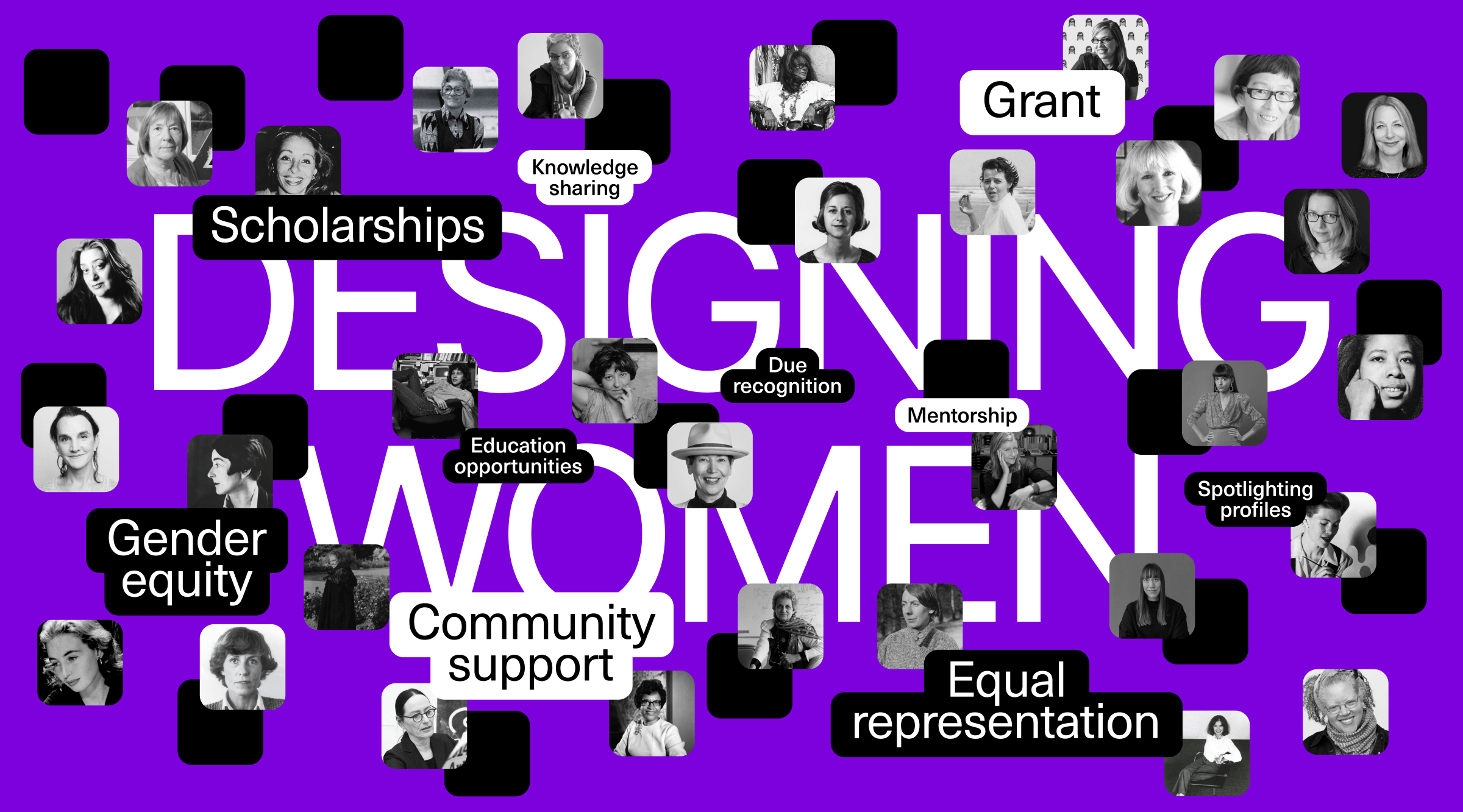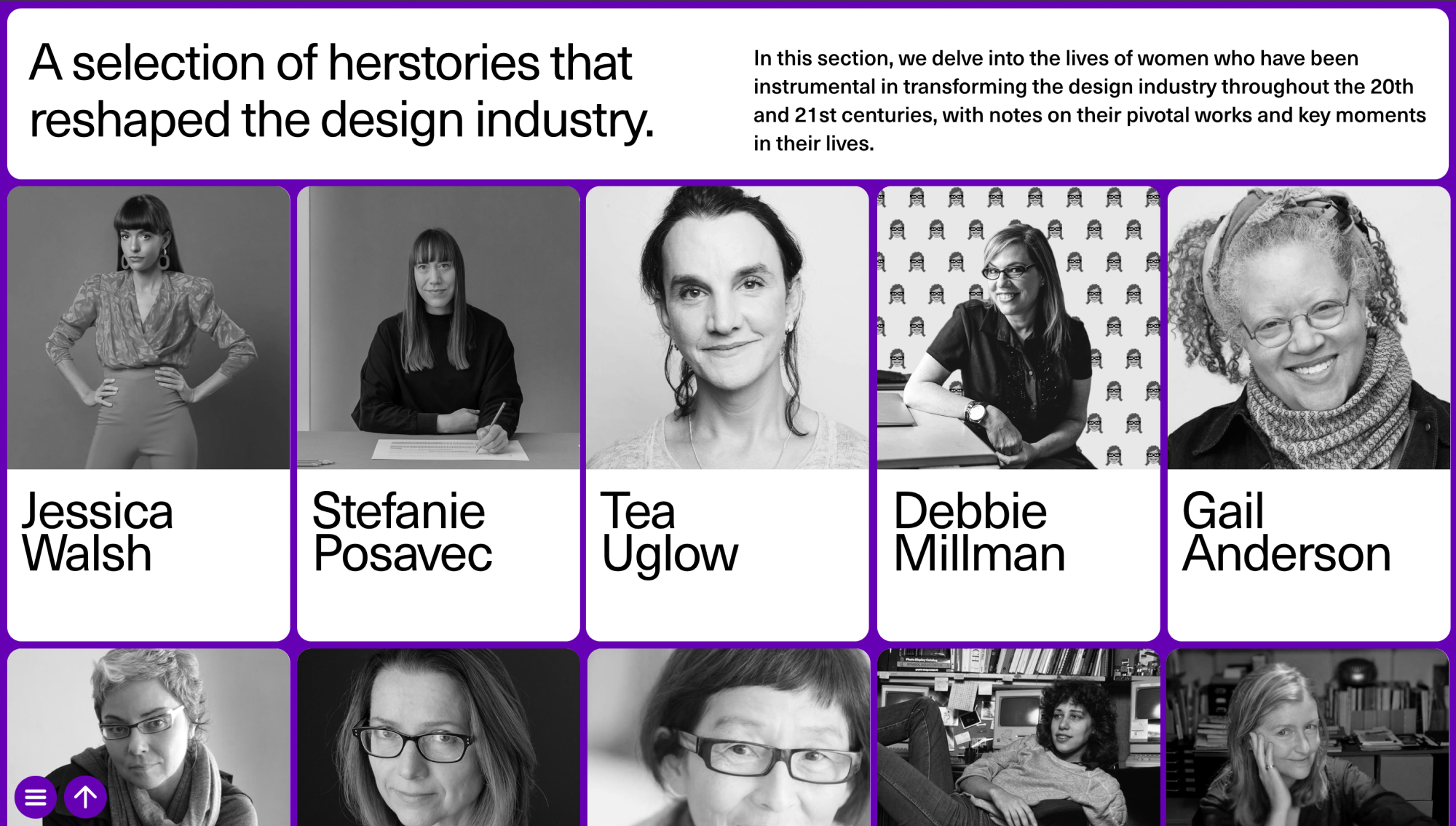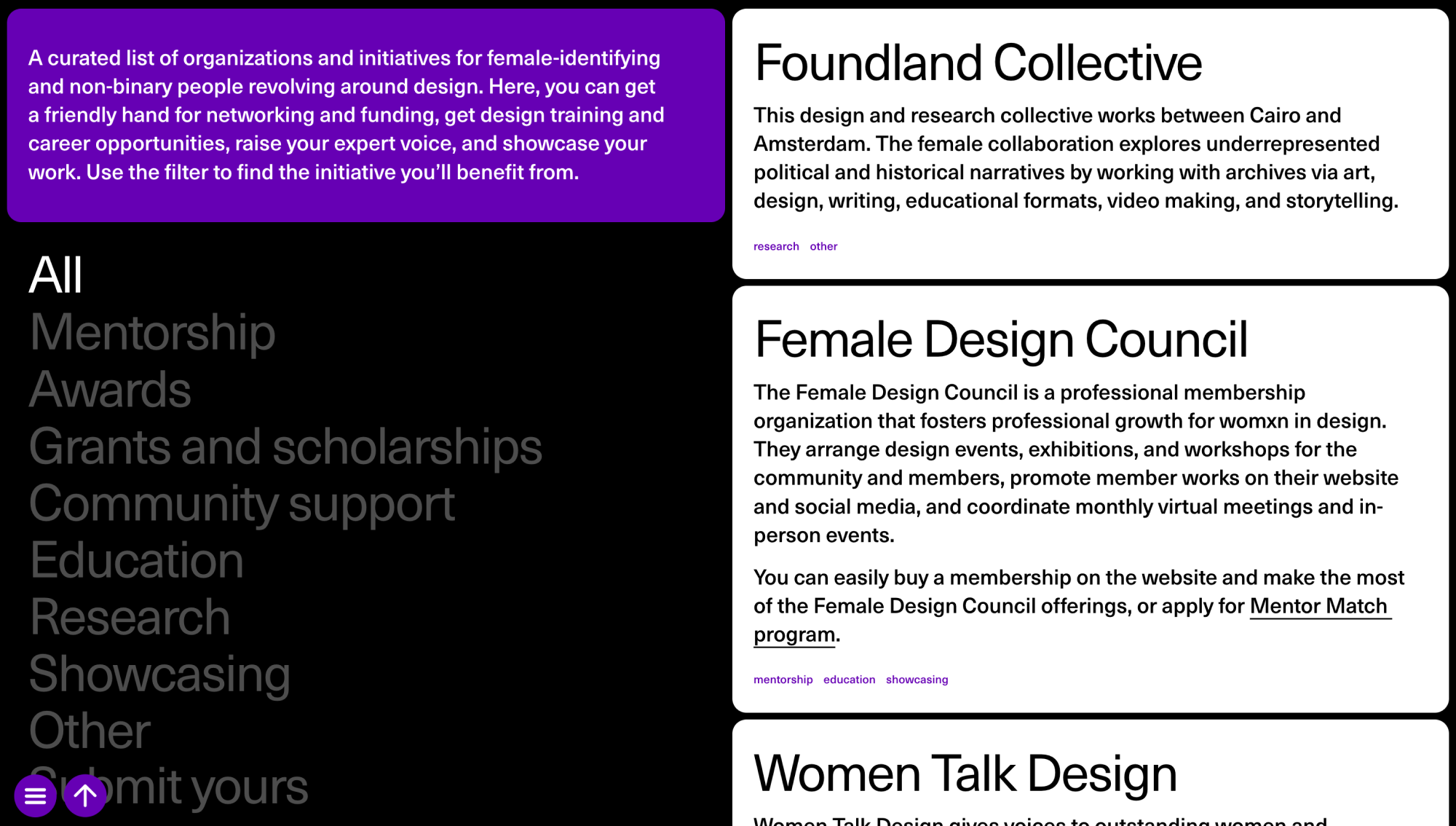The philosophy behind Designing Women 2024
Dive into the philosophy and making of Designing Women and its 2024 reboot with firsthand stories from Diana Kasay, Readymag’s Co-founder and CEO, and Alya Datii, Readymag’s Head of Marketing.

The Global Gender Gap Report 2023 shows that humanity needs 131 years to close the gender gap and will only succeed if it continues and solidifies the effort. As part of this effort, in 2019 Readymag spoke up on the issue of female underrepresentation in design by documenting and archiving the heredity of female designers in an editorial, Designing Women. It consisted of the designer’s profiles, a page with resources and a vast essay on the problem. This year we’ve decided to reboot Designing Women by digging out more contemporary profiles, enlarging and opening the list of resources, and providing a ReadyLaunch Grant for female-led media projects.
In this article, you’ll learn how the Designing Women editorial was conceived, implemented, and met by the public, and how the context of the problem has changed over the years.
You’ll hear from:
Diana Kasay, Co-founder and CEO of Readymag, and the mastermind behind Designing Women.
Alya Datii, Readymag’s Head of Marketing and the producer of both editions of the project.
A project to address systemic discrimination
“We started discussing the Designing Women editorial back in 2018,” Alya Datii recalls. “At that time, the mass media space wasn’t yet so saturated with information about women’s contributions to design; Facebook was mainly about men’s achievements, and the lineups of design festivals often featured only men. A female designer, a friend of Diana Kasay, wrote a post pointing out the problem. The post triggered comments from men who disagreed with her position and did not understand where the problem lay.”
Diana Kasay adds: “In response to that post, male designers started saying that there were so few women in design because they didn’t want to pursue the profession or were objectively weaker, that’s why they weren’t invited to festivals. So, my team and I decided to show that female oppression happens systematically and universally.”
The making of Designing Women 2019 through learning
“Diana Kasay and I had a lot of conversations about gender inequality in design, and we didn’t just talk to each other: Kasay spoke with various female colleagues, strangers, and acquaintances from the design industry.”—Alya Datii, Head of Marketing at Readymag
“The problem of inequity had already been described and voiced in academic circles in some parts of the world, but there was no such discourse in the media space,” Alya Datii says, contemplating the context of those years. “The Profiles part of the 2019 project appeared because there were few lists of designing women back then. We wanted to unearth the names of undeservedly forgotten women, those who simply didn’t get the attention and appreciation they deserved during their time.”

Datii remembers that the team worked on the project for one year, but that year was spent less on technical implementation and more on reflection, backing up theories with other people’s experiences. “Diana Kasay and I had a lot of conversations about gender inequality in design, and we didn’t just talk to each other: Kasay spoke with various female colleagues, strangers, and acquaintances from the design industry. When we were looking for a female author to write an essay for the project, we also went through many materials about women by women and talked with the authors, working with the problem,” Alya Datii says, going deeper into the making of Designing Women.
Designing Women 2019 impact on the community and the team
“We were pretty anxious, but didn’t compromise on the thoughts and ideas we wanted to communicate.”—Alya Datii, Head of Marketing at Readymag
Alya Datii outlines the project’s impact: “It was the first time we spoke on behalf of a brand on a social topic, and it’s always a significant risk for a business: speaking out about something that not all audiences might agree with. We were pretty anxious, but didn’t compromise on the thoughts and ideas we wanted to communicate. Our audience met the project with complete understanding and enthusiasm, which strengthened our decision to continue moving forward in this direction. We’ve also received negative feedback and were prepared for criticism, but what really hurt the most were the ‘So what?’ comments.”
“I had no illusions that we would release it and the world would change,” reveals Diana Kasay. “But there was something we managed to achieve: the project influenced a significant part of my circle and the design environment we were in. I’m sure it did because many people messaged me saying they’d read the material and were shocked, and a big share of these responses came from men. For me, the Designing Women editorial was about gaining a voice. It was also exciting to see how the project changed the perspective of how the team members perceived one another, themselves, their careers, the professional environment, and women outside of work.”
Designing Women 2024: considering the changing context
“We’re all already realizing that it’s not just cisgender women who suffer from the patriarchal setup but also trans women and non-binary people. Everyone who doesn’t entirely match the image of the alpha male suffers.” —Alya Datii, Head of Marketing at Readymag
When talking about the changing discourse, Alya Datii notes: “In the last five years, sexism in the design industry has become a part of the mass media discourse, and, on the one hand, that’s great. Many companies and organizations are now holding events and running campaigns on the 8th of March, observing gender ratios in their teams and public events—and these practices make them reflect on the problem. On the other hand, there’s a lot of pinkwashing emerging, and often, organizations are trying to show their commitment to specific ideas without actually following them on the inside or believing in them. For us, it’s always been crucial to follow the values we share—that’s how it works with all the editorials and projects we create. For Designing Women 2024, we wrote all the pains and problems we faced as women on a big whiteboard, then used them to come up with solutions to base the project on.”
“Now, the whole gender discourse is moving forward. We’re all already realizing that it’s not just cisgender women who suffer from the patriarchal setup but also trans women and non-binary people. Everyone who doesn’t entirely match the image of the alpha male suffers. There is an intersectionality of oppression, and we tried to consider it in the reboot of Designing Women. One of the reasons the title remained unchanged was the continuity of the idea,” she explains.
“The temporal focus has also shifted in the reboot of Designing Women,” Datii points out. “We decided to add more voices that are transforming the design landscape today. We believe these examples will help our audience grow and see that they don’t have to live for 70 years and draw a dozen pictures every day to leave a mark on history.

We also understood how much work had already been done by activist initiatives and recognized that our responsibility as a business was to use our platform to shine a light on the work of others. In the reboot of the project in 2024, we’re taking this responsibility to a new level: we made the project much more horizontal by referring people to sources that deal with gender equality issues professionally.”
Adding a financial boost for media projects to keep them going
“I always thought grants were only given out by big institutions, but suddenly, it struck me: if anyone can provide grants, why haven’t we done it before?”—Diana Kasay, Co-founder and CEO of Readymag
Kasay recalls how the idea for the ReadyLaunch Grant came about: “At the end of 2023, a friend came to visit me, and at some point she mentioned that she’d applied for some private creative grants. I always thought grants were only given out by big institutions, but suddenly, it struck me: if anyone can provide grants, why haven’t we done it before?”
Alya Datii also outlines the role of financial support: “During our research, we found that there are a lot of media projects dealing with gender equity, but it’s hard for them to sustain their work from a financial and time perspective. Our grant can give them an opportunity to pay themselves, pay their team, or cover other expenses, at least for a while.”
“This time we can only select four projects, but we’ll try to connect applicants with other organizations that can help them in different ways. If we see a response and community interest in our initiative, we’ll think about other ways to help further. We don’t know if it will be funding as well, but there are a lot of different resources people need: mentorships, subscriptions to services, educational courses, and trips,” she adds.
“Here’s some advice we as a company can give: practice what you preach. Create a work environment where women can flourish, evolve, and build themselves a safe future, where they’ll feel confident in maintaining their careers as they age.”—Diana Kasay, Co-founder and CEO of Readymag